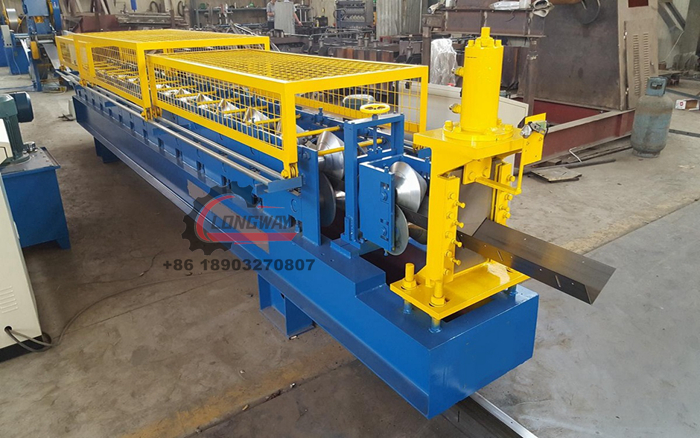C Z Purlin Roll Forming Machine for Efficient Steel Structure Production
The C-Section Z Purlin Roll Forming Machine Revolutionizing Steel Fabrication
In the modern construction industry, efficiency and precision are paramount. Among the vital machinery that contributes to this demand is the C-section Z purlin roll forming machine. This advanced equipment has transformed the way purlins are manufactured, making the process faster, more cost-effective, and environmentally friendly. In this article, we will explore the functionality, advantages, and applications of the C-section Z purlin roll forming machine.
Understanding C-section Z Purlins
Purlins are horizontal support beams used in construction, primarily in steel framing. They provide structural support for roofs and walls, helping distribute the weight and load efficiently. The C and Z in C-section Z purlins refer to the shape of the cross-section of the steel beams. C-section purlins feature a 'C' shaped profile, while Z-section purlins have a 'Z' shaped profile. Their unique designs allow for easy stacking and integration with each other, which aids in constructing robust and stable structures.
Functionality of the C-section Z Purlin Roll Forming Machine
The C-section Z purlin roll forming machine is an automated system that fabricates purlins from steel coils. The process begins with feeding raw steel into the machine, where it undergoes various stages of forming, cutting, and punching. The roll forming process utilizes a series of rollers to gradually shape the steel into the required C or Z profile.
1. Feeding and Guiding System This component ensures that the steel coil is fed accurately into the machine, maintaining alignment and preventing defects.
2. Roll Forming Station Here, the steel is passed through multiple rollers that gradually bend and shape the steel sheet. The precise placement and configuration of these rollers enable the machine to create uniform profiles consistently.
3. Cut-off Mechanism Once the purlin has been formed to the desired length, the cut-off mechanism accurately slices the purlin, ready for transport or installation.
4. Punching Station Depending on the project requirements, the machine can also include a punching station for creating holes in the purlins for bolting and fastening. This feature enhances the efficiency of assembly at construction sites.
Advantages of Using C-section Z Purlin Roll Forming Machines
1. Precision Manufacturing The automated process ensures high levels of accuracy in dimensions, reducing waste and improving material utilization.
c z purlin roll forming machine

3. Cost-Effective As this machine minimizes the need for manual labor and reduces material waste, it ultimately lowers production costs.
4. Versatility The machine can be designed to produce various sizes and thicknesses of purlins, accommodating different project specifications.
5. Durability and Strength The cold-formed steel produced by the roll forming process offers excellent strength-to-weight ratios, making it a reliable choice for many applications.
Applications in the Construction Industry
C-section and Z-section purlins manufactured using roll forming machines are used extensively in several applications
1. Commercial Buildings Purlins are essential in constructing warehouses, factories, and retail stores, providing structural support for roofs and overhead systems.
2. Residential Projects They are also used in residential buildings as part of the framing systems, offering stability and support.
3. Agricultural Structures Agricultural buildings, such as barns and storage sheds, often utilize purlins for their robust framework.
4. Industrial Projects In industrial applications, purlins support roof systems and are integral to the overall structural integrity of buildings.
Conclusion
As the construction industry continues to evolve, the C-section Z purlin roll forming machine stands out as a symbol of innovation and efficiency. With its capability to produce high-quality, precise, and cost-effective purlins, this machine is not only central to modern steel fabrication but also essential for meeting the growing demands of construction projects around the globe. By leveraging this technology, manufacturers can enhance productivity while ensuring that the structural integrity of buildings remains uncompromised.
-
Roof Panel Machines: Buying Guide, Types, and PricingNewsJul.04, 2025
-
Purlin Machines: Types, Features, and Pricing GuideNewsJul.04, 2025
-
Metal Embossing Machines: Types, Applications, and Buying GuideNewsJul.04, 2025
-
Gutter Machines: Features, Types, and Cost BreakdownNewsJul.04, 2025
-
Cut to Length Line: Overview, Equipment, and Buying GuideNewsJul.04, 2025
-
Auto Stacker: Features, Applications, and Cost BreakdownNewsJul.04, 2025
-
Top Drywall Profile Machine Models for SaleNewsJun.05, 2025








